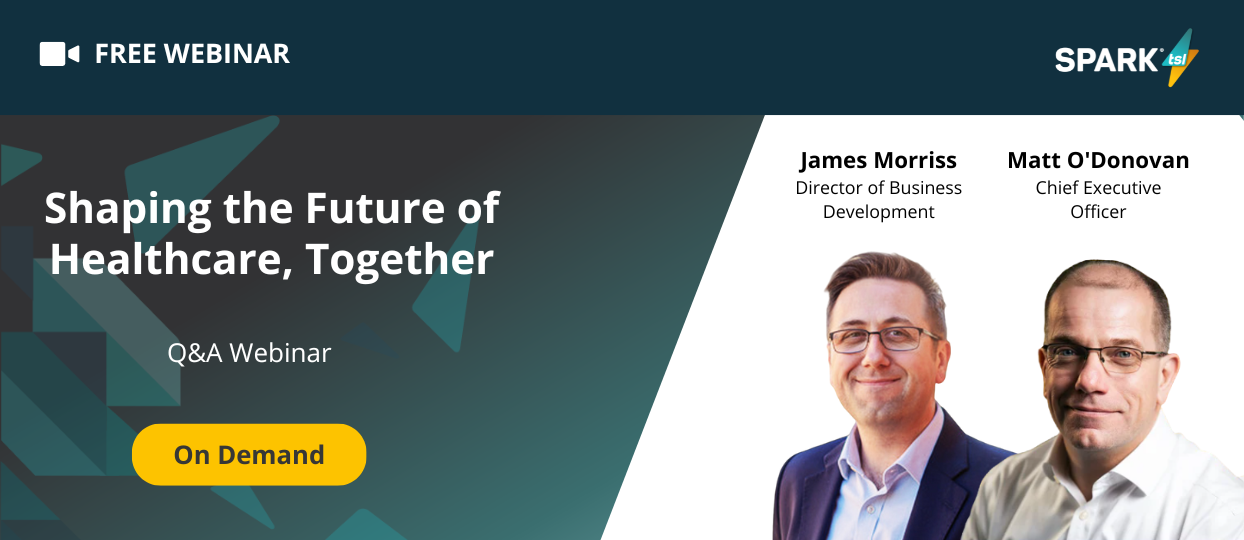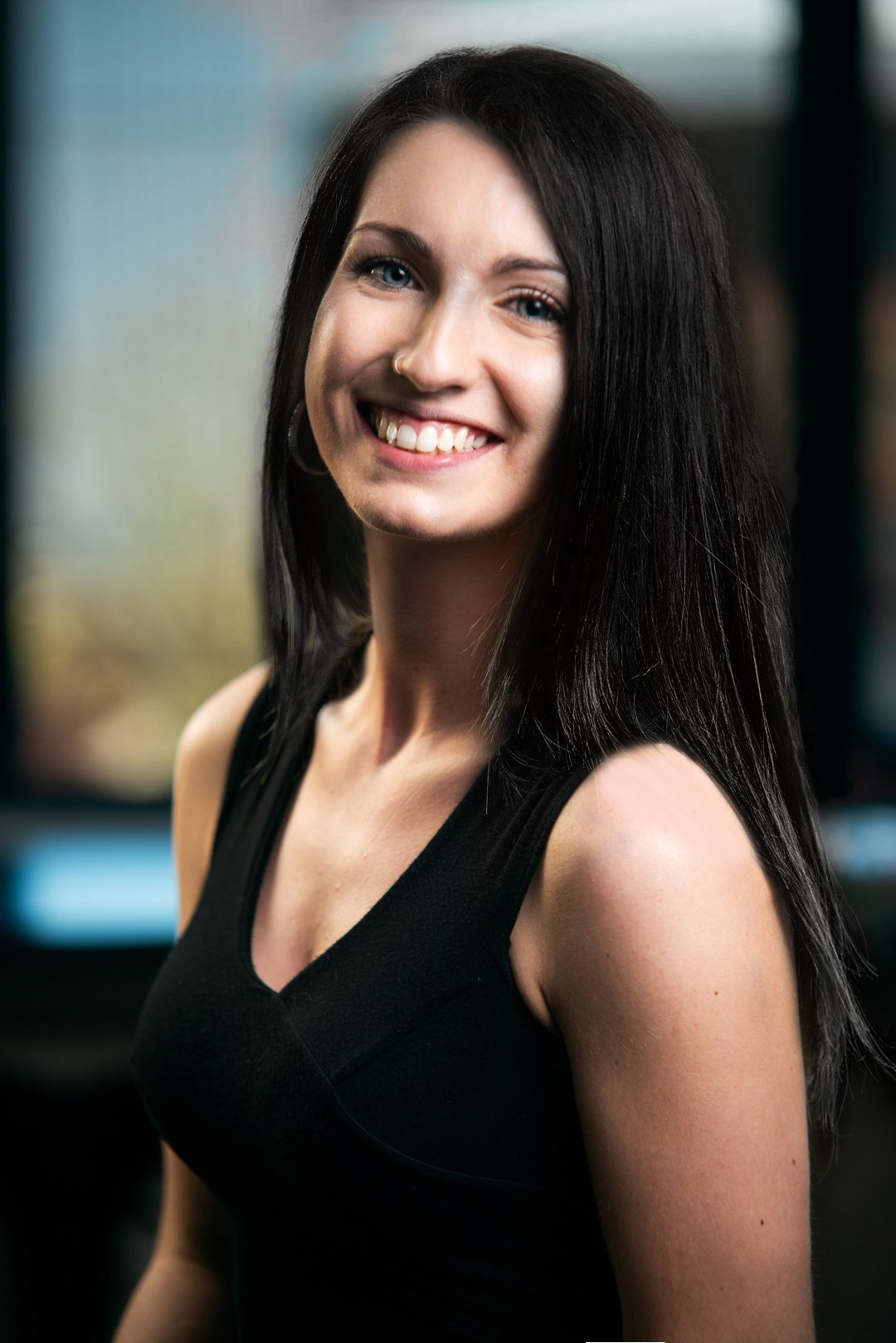Q&A Webinar: Shaping the Future of Heathcare, Together
6 minute read | 10/03/2023

With the technology in healthcare constantly changing, and WiFi SPARK’s acquisition of Hospedia, we decided to host a Q&A Webinar. This is because we want to keep new and current customers up to date with our current process and plans for the future. We are moving towards a more collaborative approach by onboarding app partners as well as listening to Trust feedback.
CEO Matt O’Donovan, and our new Director of Business Development, James Morriss are the main presenters for this webinar. They opened themselves up to questions from the audience to clear up anything that might be unknown. WiFi SPARK is constantly learning and improving, meaning we’re open to everyone’s input. Read more about the topics covered and view the Webinar On-Demand.
WiFi SPARK and Hospedia Update
WiFi SPARK has been asked about what changes have been made since the acquisition. It’s one year later and we have learned a lot. From the beginning, we have been against the patient pays model. Matt makes this clear at the beginning of the webinar.
“We are committed to the patient doesn't pay model, and that's a massive turnaround from the original concession agreement.”
The initial business model of Hospedia makes it very difficult for us to move away from this concession agreement on our own. That’s why we are encouraging Trusts and their charities to help fund bedside entertainment for just £1 per bed per day. Hospedia is a stepping stone to the next level of patient entertainment and engagement. It has shown us the potential of the Bedside Units and how to improve them. Matt believes that we have the potential to turn it all around.
agreement on our own. That’s why we are encouraging Trusts and their charities to help fund bedside entertainment for just £1 per bed per day. Hospedia is a stepping stone to the next level of patient entertainment and engagement. It has shown us the potential of the Bedside Units and how to improve them. Matt believes that we have the potential to turn it all around.
“We’ve really got an opportunity to set the standard of what excellence is going to be in terms of delivering content, engagement, education, and entertainment to the bedside as well as a significant return on investment and cost savings for the Trusts.”
While the Hospedia technology is dated, there are still useful features that we need to make more use of. As James said, “there are 56,000 devices that still serve a purpose of the current time and there is a lot we can do to help our existing customers.”
Hospedia units allow for surveys, images, videos, and leaderboard advertisements that can all be Trust related. Whether that’s pushing the ‘Get Up and Move’ campaign, uploading meal ordering images, or providing bed exercises to help prevent bed sores. There are still lots of resources available on Bedside Units. Outdated technology is what’s limiting their true potential for both patients and NHS staff.
This needs to change.
Trust Feedback
James has been interacting with a lot of our existing NHS customers. Through this, he has learned more about the needs of NHS Trusts and how we can help alleviate some of their pain points. When visiting one client, James stated that “the first question every single person asked was “how does this help our patients? How does it make the patient experience better? What does it do for our patients?”
While ROI for the Trust is important, the main benefit always has to be for the patients. Important elements of a good patient experience include education and engagement and James highlights the importance of this: “it's our job to empower those patients, make the experience more positive and just give them more access to information so they know what's going on.”
Information is a powerful tool, yet it can be difficult to communicate. We can help bridge this gap by making the appropriate information more readily available for patients. Links can be signposted and shown on our WiFi portals and the home page of SPARK® Media Bedside Units. Leaderboards can be uploaded to Hospedia Bedside Units. We can help spread powerful information as well as basic details like the patient care journey through our technology. We can make patients more educated about their care and remove the unknown.
It’s useful to note the aging population within hospitals. James gets many reports of the demographic within Hospitals. The majority of acute hospitals are made up of patients that are over the age of 60.
“There's a whole piece around digital inequality and bringing in information and accessibility to those people that otherwise would have just been left.”
Some dismiss Bedside Units because most people own a smart device. Most young people that is. Many of the older generations still don’t own a smart device and therefore easily become bored in hospital. By educating staff and providing the right educational resources, this elderly generation can greatly benefit from Bedside Units.
Media Bedside Units and Apps
After all that learning, we are ready to look into the future. James reveals what our goals will be in the coming years.
“Our goal over the next three to five years is that we are not just going to provide new technology. We're going to enable better use of the existing technology.”
James is referring to the Bedside Unit version of SPARK® Media. This product brings in a new era of Bedside Units that is 100% free to use for patients. These new units utillise existing healthcare and entertainment apps and bring them to the bedside. There is a plethora of apps that already exist out there in the world, from translation services to clinical messaging and meal ordering. The difficulty for Trusts is providing a platform where hospital-wide and ward-specific apps can be accessed in one place. This is where SPARK® Media BSU comes in.
Ward-specific apps make patients feel more included and their needs specifically tended to. It can also save staff time talking patients through post-op care if that information is readily available in front of them. For example, if a patient was in an orthopaedic ward following an operation, there can be an app that shows them resources around physiotherapy. Or in a maternity ward, there can be resources about post-pregnancy care, and signposts to peer groups and new mothers groups in the area. This element of personalization can vastly improve the patient experience.
Part of the benefit of Horizon is that it can utilise the existing infrastructure of Hospedia. This means Horizon can easily swap out Hospedia units without needing to remove and reinstall new extendable arms. James says how this modernises Bedside Units.
“Media BSU can use those cables, those arms, and the server equipment that's already in place. It's just going to bring the whole experience kicking and screaming into the 21st century.”
Not only will this adaptability reduce the installation time, but it will also save the Trust from needing to buy new infrastructure. Hospitals with Hospeida can simply recycle their existing assets.
Security
All of this technology is no good if it isn’t secured. As Hospedia is an older system, it’s harder to keep the same level of security to modern-day standards, yet we’re making it work. Matt is very clear on this, stating that “We're making sure this infrastructure remains available, remains secure and it is something that the Trust IT department does not have to worry about.”
Part of our managed service means that the Trust doesn’t have to deal with upkeep and improvement of security. We make sure patient information is secure and can be completely cleared down and removed from devices.
There were some queries about how the app system will work on Media units. Matt assures Trusts that:

“We don't freely make the App Store available. No one can go into these devices and start installing whatever they want. So the applications that are available are carefully vetted and considered. They're provided with the full consent of the NHS Trust and they're carefully monitored and maintained by us as part of that support. So we can make sure that the applications installed are secure, updated, properly maintained and appropriate for the bedside device.”
Our service takes away any extra responsibility for the Trust. We manage and maintain the apps, make sure they’re up to date, and upload the apps to the right units in the right wards. All the Trust has to do is say what feature they want, and we will do the rest.
View the Webinar
This was only a sample of information that came out of our Q&A Webinar. Don't miss out on other valuable insights and discussions that commenced. Watch the webinar on-demand now by clicking the image below.
About the author
Rebecca O'Donovan
Becky is the Marketing Director at SPARK TSL, of whom she has worked for since 2012. She is responsible for high-level marketing strategy focusing on lead generation and aiding the vision of the business to ensure business growth.
More articles by the author
Related articles
 Company News
Company News
SPARK® TSL's Vision for the Future
What's SPARK® TSL's vision for the future? While we continue to provide and monitor WiFi and Analytics for ...
 Company News
Company News
We Provide Free Christmas TV for Hospital Patients | SPARK TSL
Trusts and health boards with Bedside Units (previously Hospedia) will be able to give patients free access ...
 Company News
Company News
Improving Healthcare: SPARK® TSL Demonstration Day Insights
SPARK® TSL hosted their first demonstration day back in March. Hosted by Francesca McPhail, Healthcare ...



